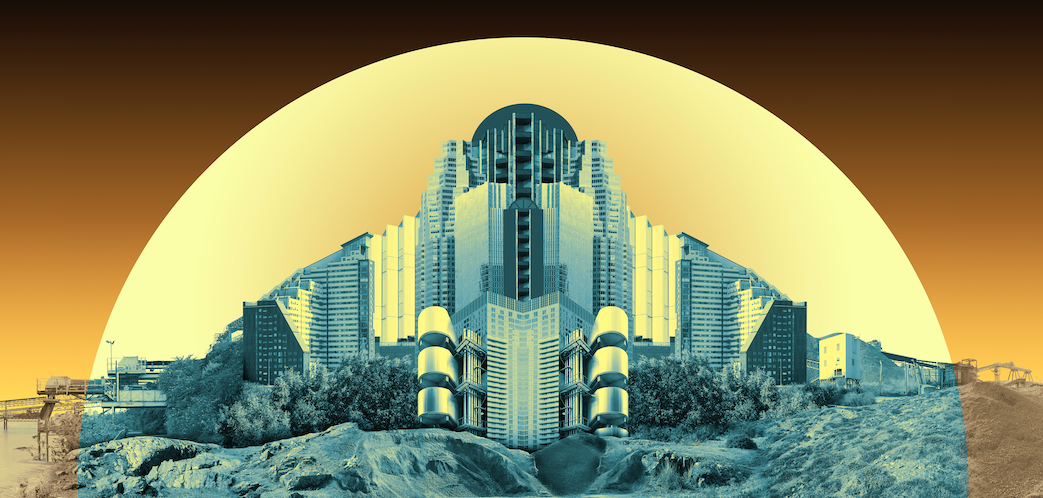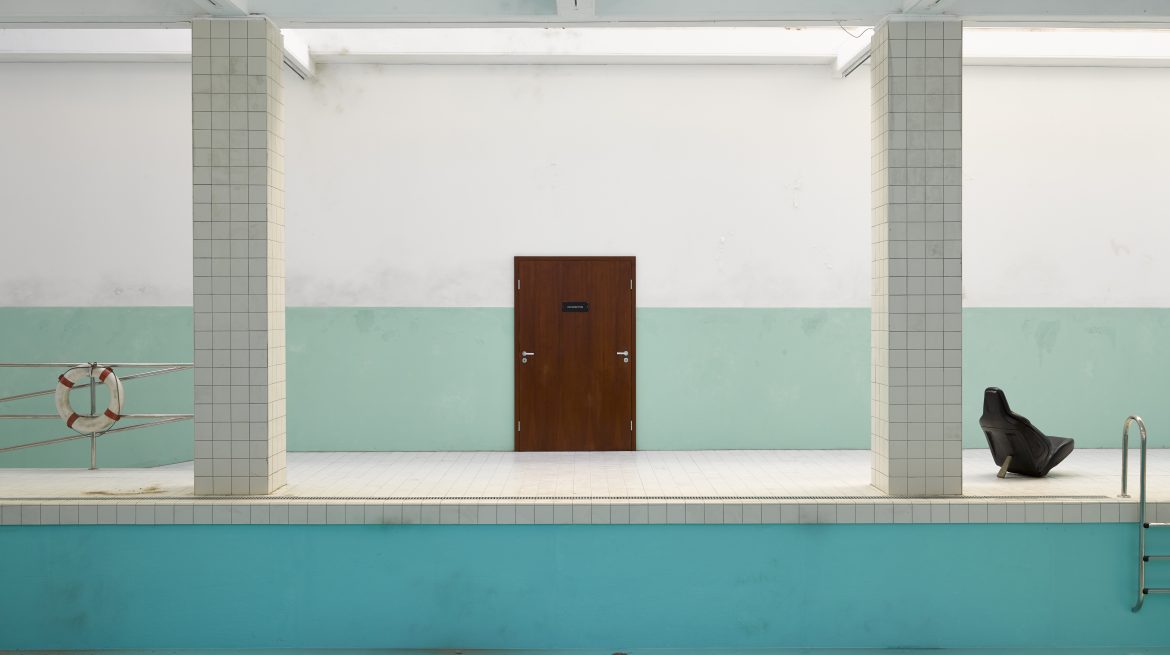
Monzo cards, rising house prices and one too many Carhartt beanies. The relationship between artists and gentrification is a well-known one. From London to Berlin, the trail of destruction is plain to see. For some, this is a natural cycle of urban regeneration, while others argue that it is precisely the elements that make an area appealing (low rent, a longstanding local community, affordable amenities) which are the first to disappear. It goes something like this: artists, generally on relatively low incomes, move to areas of the city where rents are affordable. Their presence leads to more interest in property in the area, and ultimately, its development. Inevitably, the whole process usually ends with the artists having to move on, as rents increase.
For many artists the life cycle of a city is a topic ripe for exploration in their work, and an urgent political concern. Situated at the front lines of this transformation, it is hardly surprising that the creatively minded feel compelled to get involved. Artist duo Elmgreen & Dragset, who presented a major solo exhibition last year at London’s Whitechapel Gallery, chose to place the city’s gentrification at the forefront of the show. Images of a mysterious abandoned swimming pool, supposedly unearthed in the longstanding gallery following years of neglect, circulated thick and fast on social media. An urban oasis supposedly founded in 1901 by philanthropists, the artists told the story of the ill-fated pool.

“The art world is undeniably entwined with notions of luxury, and the two make uneasy bedfellows”
Except, of course, for the small matter that the pool was pure fiction. Elmgreen & Dragset—the brilliant minds behind the abandoned, surreal Prada store in Marfa, Texas—are no strangers to contemporary mythologies; and they certainly know what will get the millennial imagination firing. In an accompanying text to the Whitechapel pool, they write, “East London saw intense gentrification in the last ten years. Bars where artists used to meet closed, artists’ studios were turned into luxury loft apartments. At the same time poorer boroughs experienced the effect of austerity politics. Our derelict swimming pool relates to this metamorphosis of local communities.” The pair has since moved back to their native Germany, following more than a decade of living and working in London.
For New York-based Amie Siegel, urban and social change reveals itself in the very materials that surround us. Her cinematic works explore the mechanisms that imbue objects with cultural meaning. In Quarry (2015), she traces the excavation of marble from the deepest underground quarry in the world to its use in the modern luxury apartments of Manhattan skyscrapers. The creation of luxury is unpicked and followed to its root, while a greater question of the role that art itself plays in this fantasy is never far out of sight. As the film progresses, it becomes clear that even the images that we see of the newly built towers are speculative, shown to be idealized models ready to sell the real thing.

The art world is undeniably entwined with notions of luxury, and the two make uneasy bedfellows. Even as artists mount their critique of these mechanisms of value, labour and ownership, their very survival frequently depends on the saleability of their work—and their basic ability to make rent. Meanwhile, the term “art washing” is used to describe the practice of property developers inviting artists or artistic communities to make use of space otherwise designated for the market. In doing so, these developers both fulfil their corporate social responsibility and increase the desirability of the locale for prospective residents. Artists and galleries, more often than not, cannot afford to turn down the opportunity—but what is lost in their embroilment with this murky financial world?
Siegel tackles this head-on in two films from 2013. In Provenance, she traces the global trade of modernist furniture from the Le Corbusier-designed Indian city of Chandigarh to their appearance at auction houses worldwide for record prices. The film itself was then auctioned at Christie’s in London, turning it into an object for sale in its own right, and firmly acknowledging the artist’s own place in this financial circuit. A second film, Lot 248, captures this auction, mirroring the first and exposing the role that the art market plays in displaying and denoting worth.

Artist collective Shanzai Biennial (co-founder Babak Radboy is also the creative director of fashion label Telfar) took this explicit engagement with the market one step further back in 2014, when they attempted to sell a real-life property, named 100 Hamilton Terrace, at Frieze London for £32,000,000. The absurdly glossy apartment is depicted in an accompanying video, which apes all the well-worn tropes of estate agent sales packages. A wealthy couple drink wine, swim in their pool and gaze out across London’s skyline from their living room. It serves as a too-close-for-comfort parody of the luxury lofts that Elmgreen & Dragset bemoaned. Chillingly, unlike the Whitechapel pool, 100 Hamilton Terrace is real.
Such insight doesn’t necessarily require an artist’s touch. Visitors to the Tate Modern’s Switch House, the much-hyped extension by architects Herzog & De Meuron, will find that they can cop a good look at the newly built neighbouring luxury flats. It is an uneasy view, both in terms of the invasion of privacy (even what’s on these residents’ television screens can be observed) and in regards to the confluence of money and art, which so often go hand-in-hand. It is no surprise that this development has gone up quite so close to the Tate, with its unique blend of prestige and power.

“It is no surprise that this development has gone up quite so close to the Tate, with its unique blend of prestige and power”
Another recent architectural development that mixes capital and commerce inextricably with the art world is New York’s Hudson Yards, which opened last month. On a vast site on the west side of Manhattan (once earmarked for New York’s 2012 Olympic bid), a developer has conjured a complex of glass towers filled with offices and expensive apartments. Thomas Heatherwick was commissioned to design a large-scale “sculpture” and viewing platform, from which visitors have been surveying the seven-storey mall below, and the endless ugly buildings at eye-level. As Oliver Wainwright wrote in the Guardian, “The surprising thing isn’t that such a development has happened. The real shock is that it’s quite so bad.”
“Art washing” at Hudsons Yard comes in the form of the Diller Scofidio-designed cultural destination The Shed. The marketing material describes how “The Shed brings together established and emerging artists in fields ranging from hip hop to classical music, painting to digital media, theater to literature, and sculpture to dance in an unprecedented movable structure that adapts to support all kinds of inventive work under one roof.” Undoubtedly the venture is set to provide a home to a wealth of creative talent in the city, but the publicity that has surrounded its opening has inevitably reflected upon its somewhat unpalatable link to the wider development.

Some of these concerns are taken up by Felicity Hammond in a new exhibition at Arebyte Gallery in London’s City Island, titled World Capital. In it, she explores how digital technologies have influenced the global image of the city, and particularly the computer generated architectural renderings that populate the hoardings that hug building sites. In doing so, she highlights the homogeneity of these sterile visions of our future urban spaces, and the disingenuous narratives that they are able to project. Her research into the recent past of the area of East London where Arebyte is based reveals an industrial and diverse past, a far cry from the faceless tower blocks that now line its streets.
Famously, talking about money is never easy. While the critique of commerce can be an easy win for artists, digging deeper to seek out solutions demands more from both creator and audience. To unravel some of the structural inequalities borne out by the privilege and power that the art world wields will take time. The future of the urban landscape is under threat, as luxury flats sit empty and homelessness, even across cities as geographically disparate as London and Los Angeles, reaches crisis point. The art world has a part to play in all this, and must not turn its back on the fast-changing skyline of our cities.





